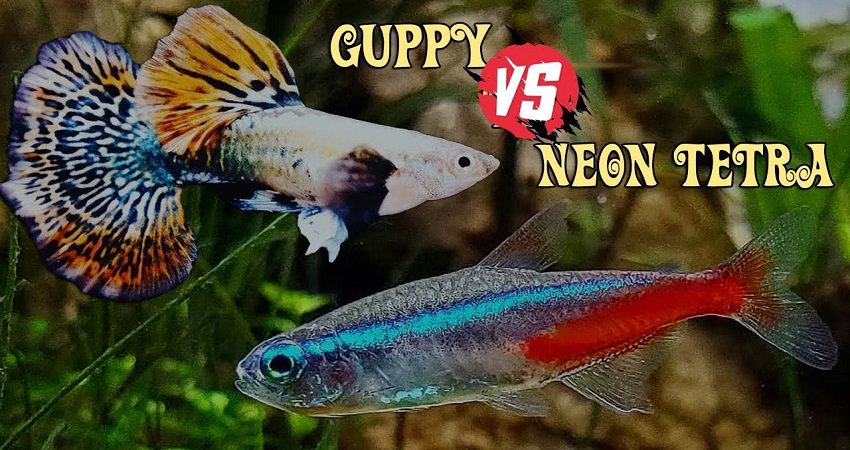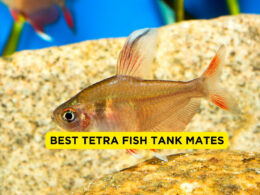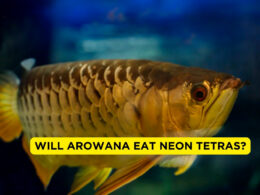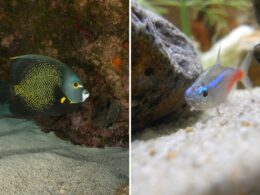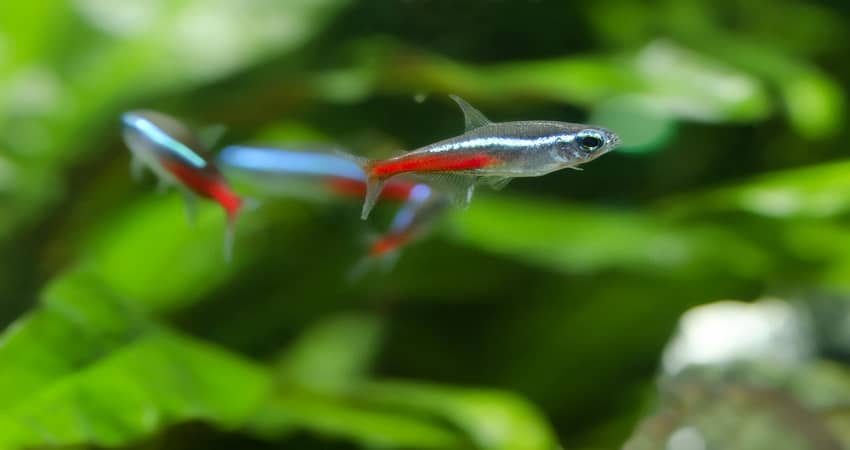In this article Show
Most people prefer guppies and neon tetras due to their many benefits. For instance, they are attractive and easy to maintain and take care of. Also, both fish don’t make noise and have many common features.
The process of keeping them together depends on their similarities and differences.
Sometimes, it is advisable to house them separately in that some fish may develop stress and fail to grow as desired. In case of any disease outbreak, all fish present in the same tank are sick, and they may also die if there is no quarantine zone.
The article below shows the typical characteristics of both guppies and neon tetras. Also, it shows if you can house both fish tighter, especially if they have almost the same features. Moreover, the article shows the best fish among the two.
Also worth reading;
- Neon Tetra vs. Cardinal Tetra: What Is the Difference?
- Do Neon Tetras Need Oxygen and Air Pump?
- How Many Tetras in a 5-Gallon Tank?
- How to Breed Neon Tetras? – The Complete Guide
Standard Features For Guppies And Neon Tetras Fish
Both fish have similar characteristics that encourage one to house them together without any difficulties. The features include the following;
1. Tank Requirements And Housing Conditions
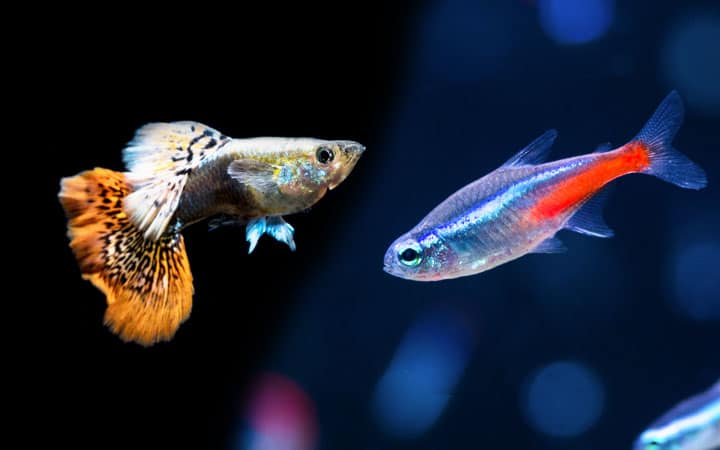
Guppies and neon tetras are native, especially in most places, such as; the Amazon’s warm tropical freshwaters in South America. The water in their tanks should be similar to the natural water habitat. As a result of these conditions, the two aquarium fish species will thrive in an environment comparable to what they are used to in the wild.
You must ensure that the water in the tank is in ideal condition. The purpose of providing proper water parameters is to allow certain bacteria to break down toxic compounds in water into less dangerous substances for your fish’s survival. You’ll notice that most aquarium hobbyists like to maintain their Guppi in a 10-gallon tank.
While we’re on the subject of tank conditions, keep in mind that these fish prefer a specific temperature range. In this case, a temperature of 75 to 82 degrees Fahrenheit is appropriate. To maintain the proper temperature, position a heater and a thermometer in the aquarium.
Guppies and Neon Tetras are tolerant of some tank changes. These two fish can endure pH levels ranging from 5.5 to 8.5. However, 7.0 or 7.2 pH is ideal for them. Neon Tetras and Guppies, like the rest of the tank fish, will need good water quality. As a result, make sure the aquarium has a filter. Your preferred filter.
For small or medium-sized tanks, for example, you’ll need a hang-on-back (HOB) filter. However, if your tank is more than 50 gallons, you must consider an external canister filter.
When it comes to setting up the tank, the most important thing to remember is replicating the natural habitat of the Guppies and Neon Tetras. You may see how you must set up their aquarium by looking at their natural environment.
These fish can thrive because of the circumstances in the Amazon River. The majority of the tributaries are densely forested with jungle vegetation and aquatic plants, and this must help you visualize how to set your fish’s aquarium.
2. Behavior
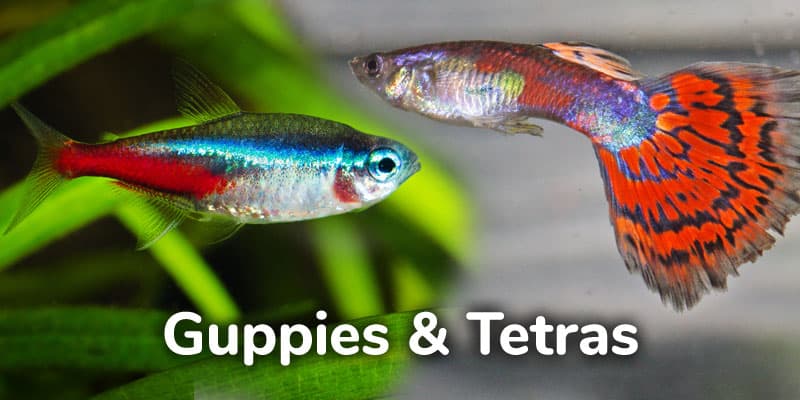
Fish such as guppies and neon tetras are calm. These fish are active swimmers who move around. It’s no surprise that they’d like more room in the tank to explore their surroundings. Males chasing ladies around is a common sight.
The fish do this in an attempt to impress them, particularly during mating season. However, if you find them concealing a lot, it’s a sign that they’re stressed or ill.
These fish like to be housed in groups rather than individually because they are shoaling species. Moreover, they appear to be more colorful when swimming in groups of six or more, which is why you should always keep at least six of them in the same tank.
If you leave a Guppy or Neon Tetra alone, it will become stressed and seek refuge. Too much stress weakens their immune system. Neon Tetras and Guppies display a wide range of colors while swimming in large groups.
These vibrant fish become more active and express their natural nature when they move about in large groups.
3. Schooling
Keep Guppies, and neon tetras in aquariums exhibit shoaling behavior. For obvious reasons, all schooling fish prefer to be among their species.
First and foremost, such fish prefer to be in the company of other fish of their species. Second, because similar species behave similarly, it will be easier for them to get along.
These two aquarium fish species have evolved to swim in big groups. When they’re out in the wild, they’re more likely to engage in this activity. Schooling is a way for Neon Tetras and Guppies to defend each other, which is why you’ll see them in huge groups.
As a result, you should organize them in groups of at least six to make them feel safe and secure, and keep in mind that they must all be the same size to prevent bullying and confrontations.
4. Feeding And Diet
Your fish’s food, regardless of species, is determined by what is available in their natural environment.
Now that the Guppies and Neon Tetras share a common ancestor (the Amazon River Basin), their diets are more likely to be similar.
Both species are omnivores, which means they may eat a wide range of foods, including animal and plant stuff. The best part about them is that they are picky eaters that will eat just about anything.
However, fish flakes, a variety of crustaceans, tiny insects, and worms make up most of their diet. They also enjoy both frozen and freeze-dried foods. To avoid cases of malnutrition, you should provide them with a well-balanced diet. To be healthy and robust, they should eat a diet high in protein and low-filler foods.
Bloodworms or shrimp, together with vegetables such as lettuce, cucumber, and peas, can be used to augment their diet on occasion. At least twice a day, feed your Guppies and Neon Tetras. To avoid waste and dirtying the aquarium, the amount of food should be sufficient.
5. Tankmates
you can place Guppies and neon tetras in the same tank as a few other fish. Choose the calmest tank mates that will blend in with these fish in this situation. To balance things, retain them as men or mix in females in a 2:1 ratio.
Platies, Gouramis, Mollies, and Corydoras, on the other hand, are the perfect tank mates. You might also add a few Swordtails and Ender’s livebearers if your Guppies and Tetras behave similarly.
For the sake of the fish’s protection, you must keep them away from aggressive or larger species. When left to their own devices, larger fish usually prey on smaller fish.
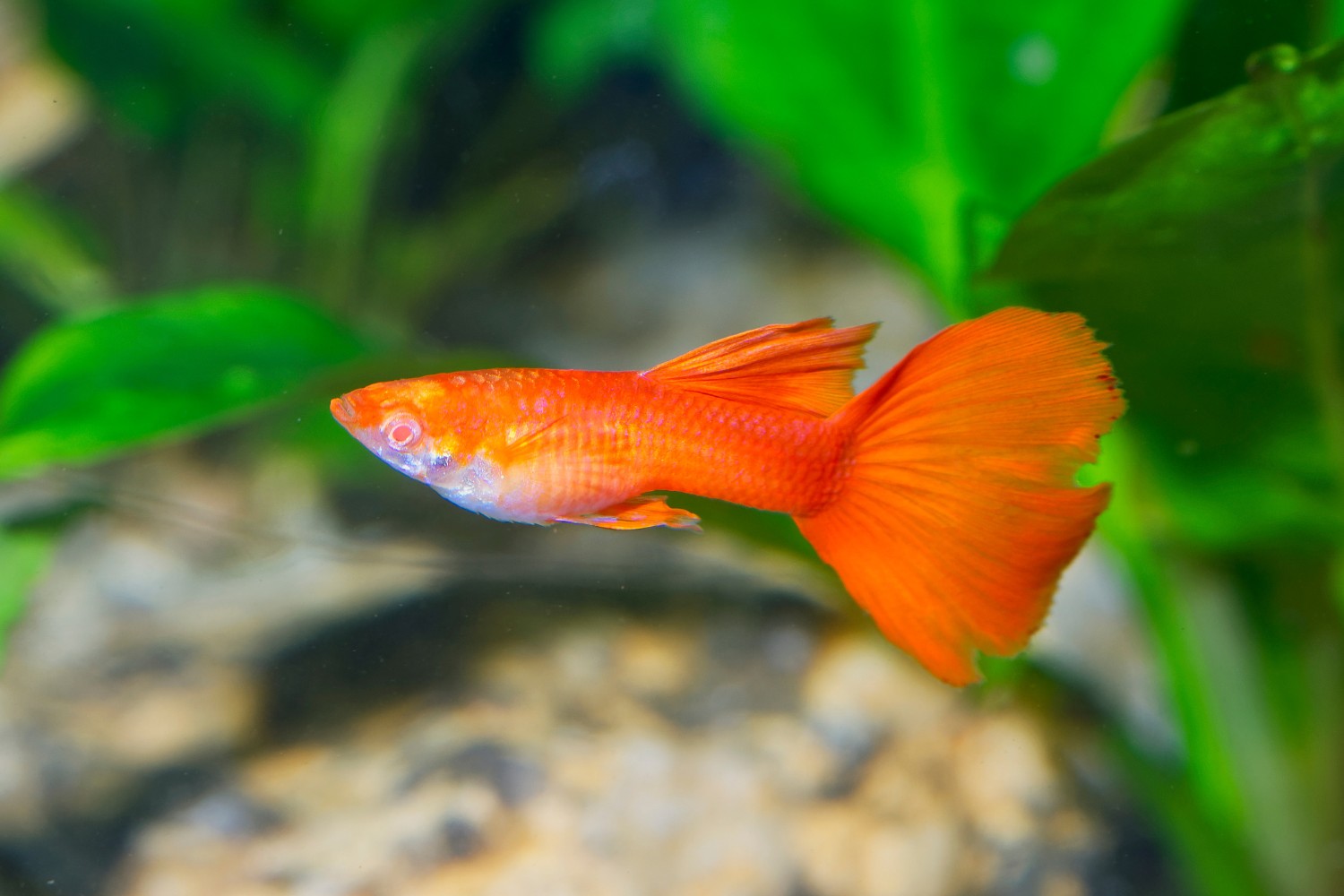
Can Guppies Live With Tetras?
Here’s a guide to housing both species peacefully.
If you’re planning to mix two distinct species, you should do everything you can to ensure a successful outcome. Here are a few things you can do to increase your chances.
1. Ensure Plenty Of Hiding Spots
Hiding areas are suitable for giving your fish a sense of security. They are less prone to become hostile if they feel safe. Fin nipping is more common than aggression. Plants, driftwood, and decorations create hiding spots to lessen the risk of fin nipping.
2. Keep Them in Schools/Shoals That Are Big Enough
Second, make sure you maintain a sufficient number of their kind. They will grow stressed if they are not around their species. Keep A minimum of 6 tetras or three guppies together. If you don’t do this, not only will their lifespan be shortened, but they’ll also be more prone to find nips.
3. Ensure That The Tank Is Large Enough
Finally, ensure your tank is large enough to accommodate all of your fish. As a general guideline, keep only one inch of fish per gallon of water. So, if your fish is 2 inches long, you’ll need 2 gallons of water.
Conclusion
You may house neon tetras and guppies together because they all have many similarities, and they are aquarium fish. For instance, they both have attractive colors. They are quiet and peaceful, prey on the same food, and the housing conditions are similar.
Despite having the most similar features, follow some precautions such as; ensuring the tank is big enough to hold the two fish together, keeping the fish in one big school, and avoiding providing them with open places with no hiding places.






